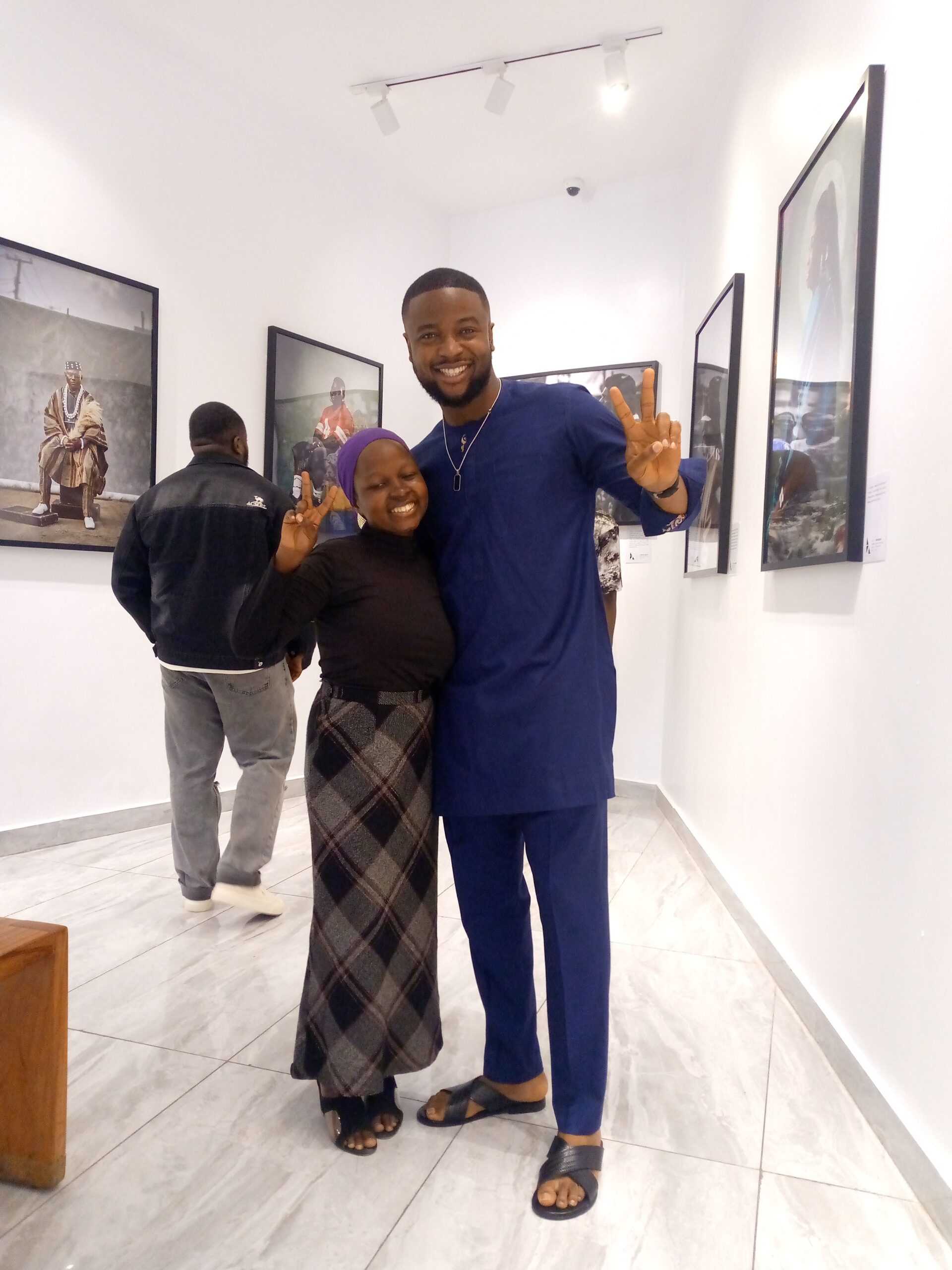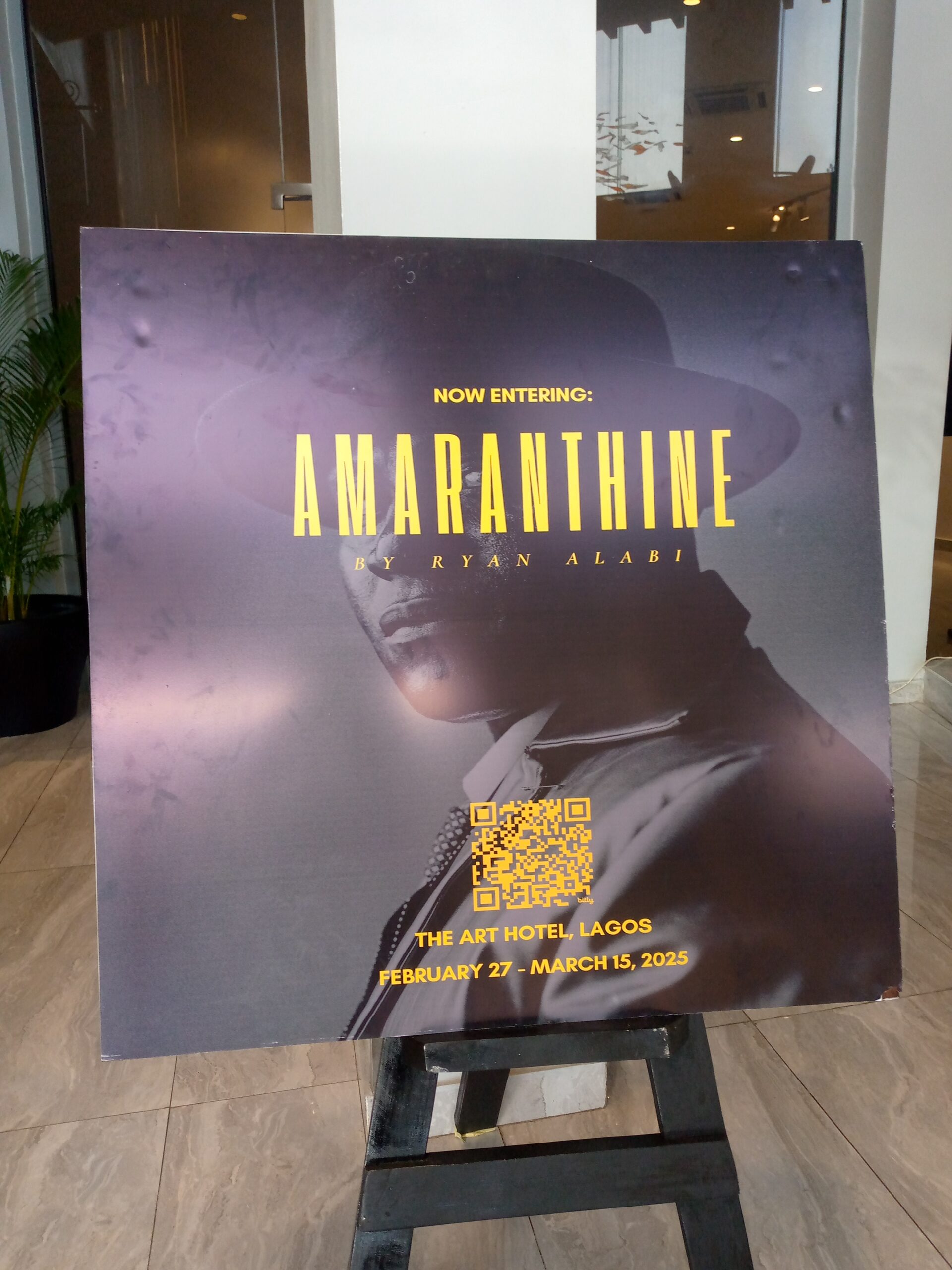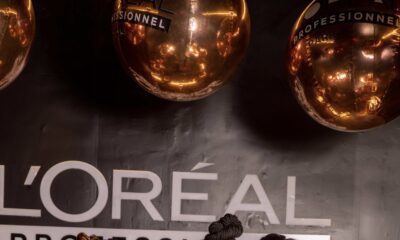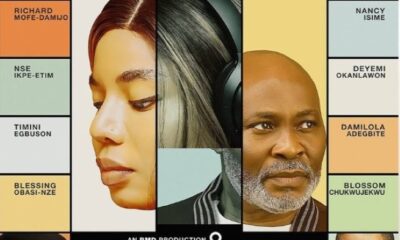Features
Rukayat Ogunlana: How Ryan Onifoto’s Amaranthine Exhibition Prompts Us to See People Beyond The Surface

On the day I watched the announcement video of Ryan Alabi’s photography exhibition, I immediately knew I wouldn’t be able to make it for the opening night, yet I knew, somehow, I would make it to the exhibition before it ended. This stayed with me as I carried on every day, living and life-ing, until I spontaneously decided to attend the exhibition while seated in a building lining one of the streets of Ikeja, where I had gone on an assignment. One hour, two bus-jumps and an Uber ride later, I was in Ikoyi, immersed in the Amaranthine experience.
Ryan Alabi’s name sits gingerly on the list of successful photographers in Lagos, renowned for photographing some of the notable names in Lagos, like the lead cast of Arese Ugwu’s Smart Money Woman, as well as Nicole Chikwe, Salem King, Jay-on-Air, Tomike Adeoye, and Timini Egbuson, among others. For his debut exhibition, Ryan’s lens focuses on three muses. Funke (LaFunky), who runs a liquor and carbonated drinks shop; Mama, who sells cooked food; and Seye Campus, a street leader, all in Ifako-Gbagada. Through these individuals, he explores the undying love for and enduring power of fashion using the symbolic Amaranthine flower that never withers, never dies.
The core message of the Amaranthine exhibition bordered on the undying nature of certain passions; fashion, in this case. It explores, through photography and videography, the lives of everyday people who once expressed themselves through daring fashion and style choices but had to repress them to focus on the quest for survival. As the voices of these individuals–Campus, Lafunky and Mama–pervaded the exhibition room from the documentary, one could almost reach out to touch the nostalgia in their voices as they narrated memories of their youthful exuberance when they dressed up and showed out.
Lafunky’s voice rose in excitement when she recounted the size of the shoulder-length earrings she used to put on, the kind of nails she used to fix and the giganticness of the heels that used to adorn her feet years back. All of which are luxuries she simply cannot afford anymore. A life Mama also shared. She said the responsibilities that came with parenthood forced her to choose survival over fashion. For Campus, his voice held a tone more akin to belief than nostalgia. He narrated how his parents always assured him that royalty existed in their lineage, and he was, therefore, destined to be a king sooner or later. According to him, “what is destined cannot be averted’’ and although life’s current circumstances do not afford him the luxury of putting on the desired clothing items he used to wear when he was younger, he strongly believes it’s only a matter of time before things align and he’s bestowed with the resources to express his true fashion desires. In his words and demeanour, he teaches us, the viewers, how to exist in our power. No slouched backs, no bowed heads, even when all we have in our grasp is hope.
The photographs exhibited were of individuals who modelled in rich, colourful and even luxurious outfits. In every pose, every frame, every click of the camera, every moment frozen in time, stories were told. Some glaring, some subtle. Stories of long-nursed scars, long-repressed desires, true expression of self, stories of charisma, of joy, of hope, of belief, of undying love for fashion. Ryan said, “It looked as though they became somebody new when they wore the outfits, but they actually became themselves. Who you are seeing when they wear the outfits is the real version of them that got repressed because of life’s circumstances, so fashion is the tool that helps them bring that out.”

While I basked in the richness of Ryan’s craft, I knew, like every artist knows, that it takes a certain kind of deliberateness to notice monotonous, everyday living beyond the surface, to look at the world and not just see what everybody else sees every day. So I asked Ryan: How did you see these individuals beyond their hustle, beyond individuals who have blended like oil onto life’s everyday canvas? Smiling, he replies that this project has been in the works for almost two years, and in those years, he has built a relationship with these individuals, had conversations with them and most importantly, studied them meticulously to understand all the details about them that came together in the creation of the project. He says that their territory is just across the street from the house that houses his studio in Gbagada, and although every day, they dressed “normally” to their stalls to earn a living, there were elements he could piece together about their history of being fashionable by merely watching them be.
By peering into the life and style of Campus, Mama and Lafunky, Ryan’s Amaranthine exhibition says that if you must hold on to something, then hold on to hope, and if you must hold on to hope, then hold on to undying hope. Leave the light on and do not stop seeing who you truly are through the eyes of your mind, regardless of how cruel and unpredictable reality can be.
Amaranthine prompts us to deeply consider what other things we may be overlooking, ignoring or suppressing. Perhaps it’s time to rediscover or, at the very least, keep hope alive, dare to dream, dare to be undying. The exhibition reflects on what it is that every human may truly desire regardless of socio-economic status: To be seen, to be given an outlet of expression and to have something to have an undying belief in.
Ryan believes that fashion is a language and a tool through which transformations can be made. He says the Amaranthine Exhibition shines the spotlight on those who make up the core parts of our society but have remained unseen or sidelined, and at the same time, the exhibition offers these individuals a renewed sense of self-worth. Showing the enduring power of fashion as a timeless force.





















